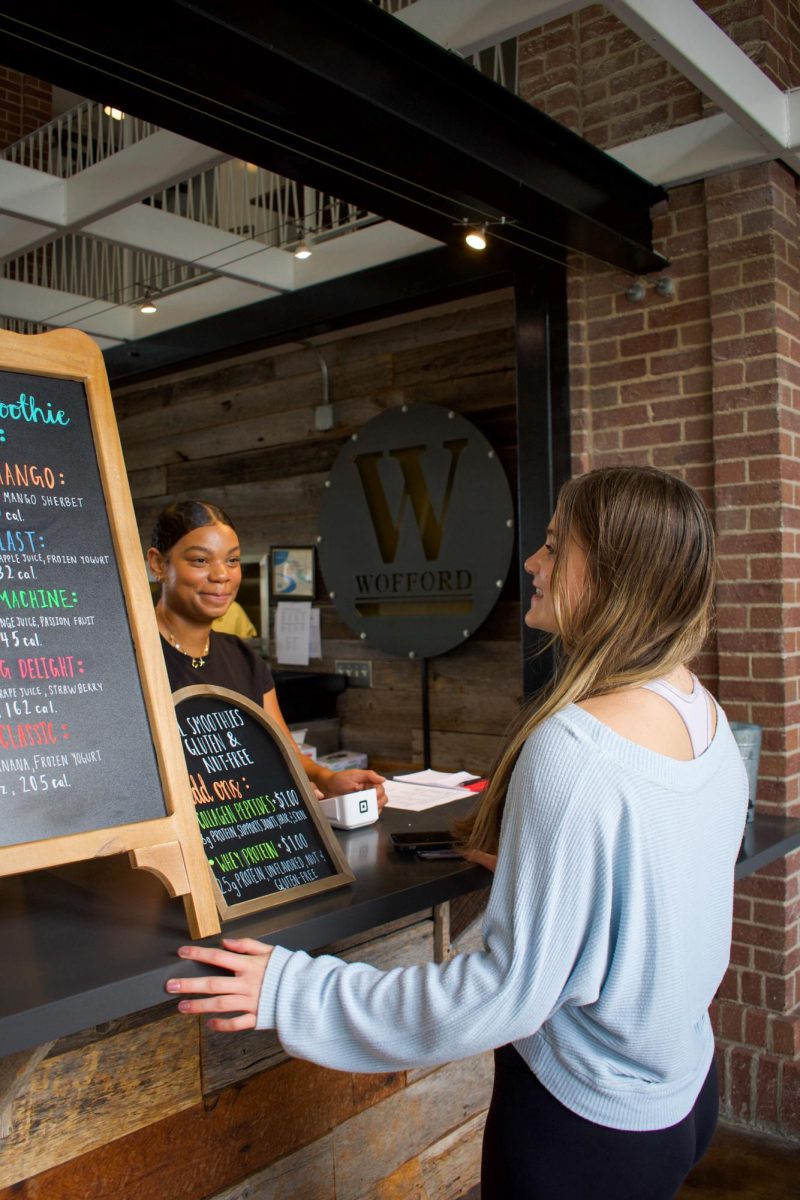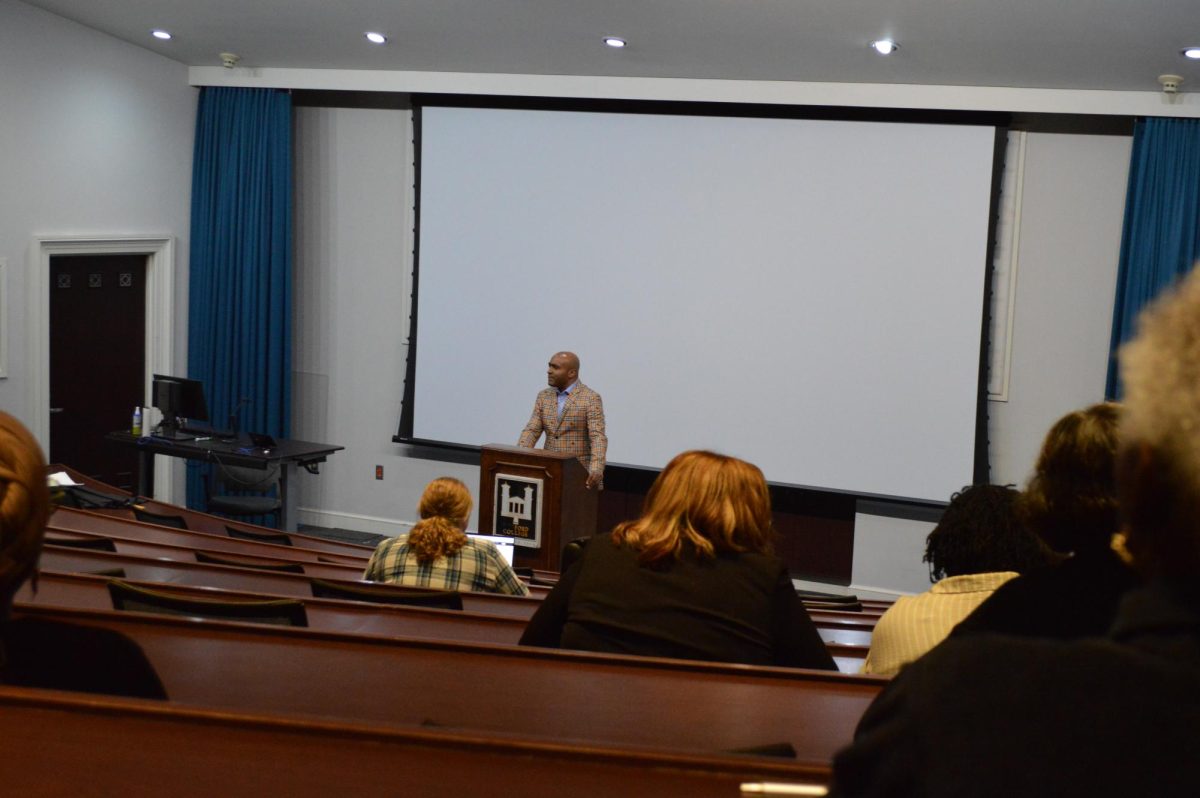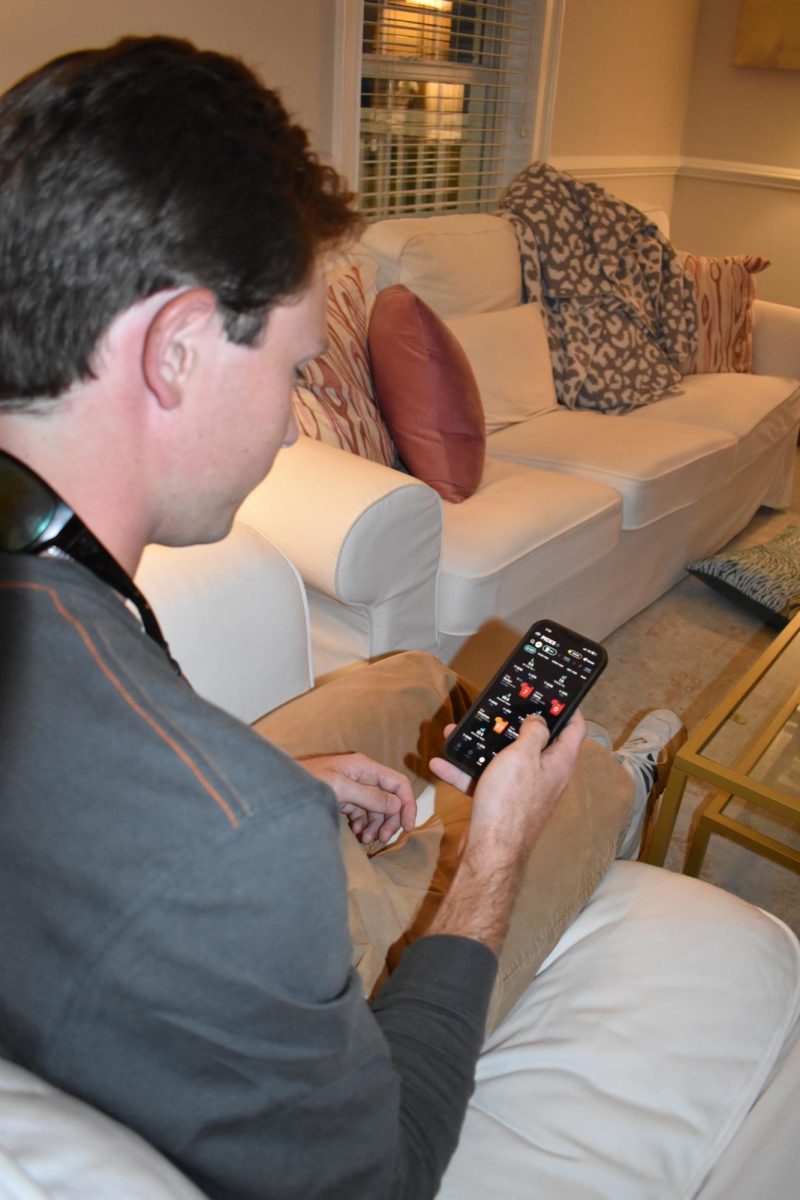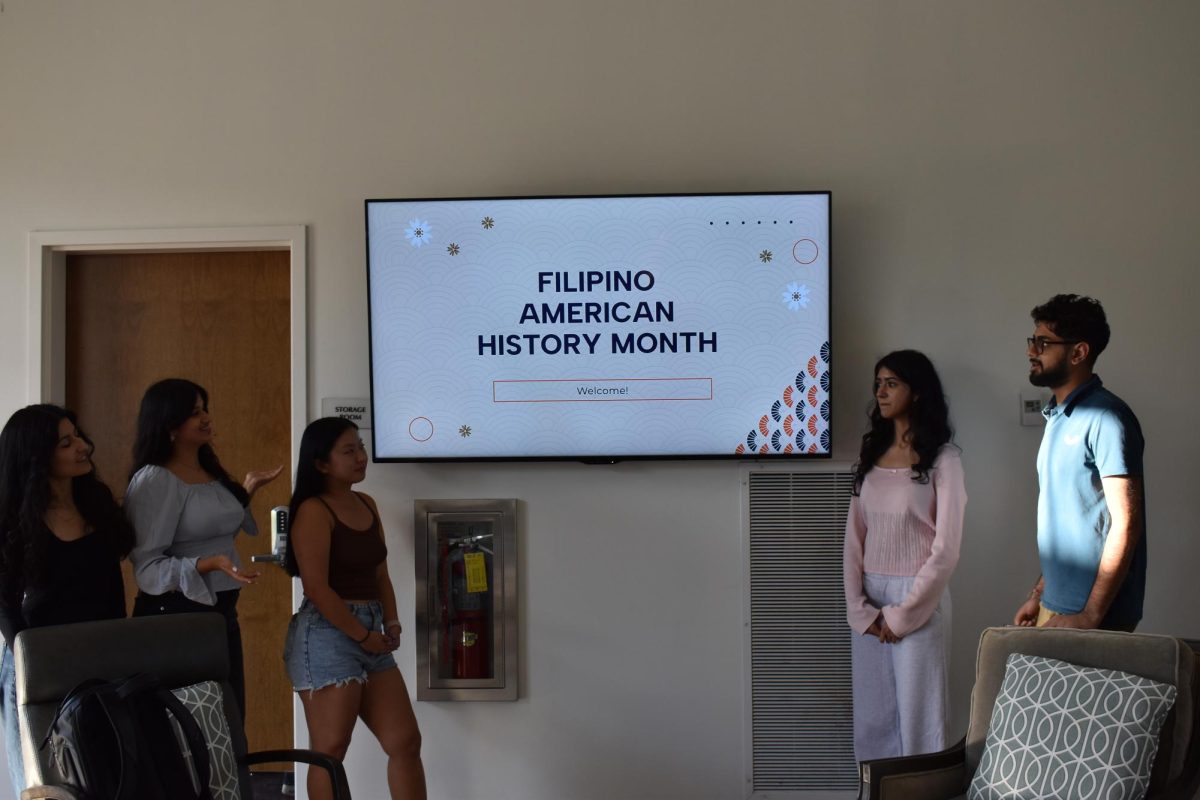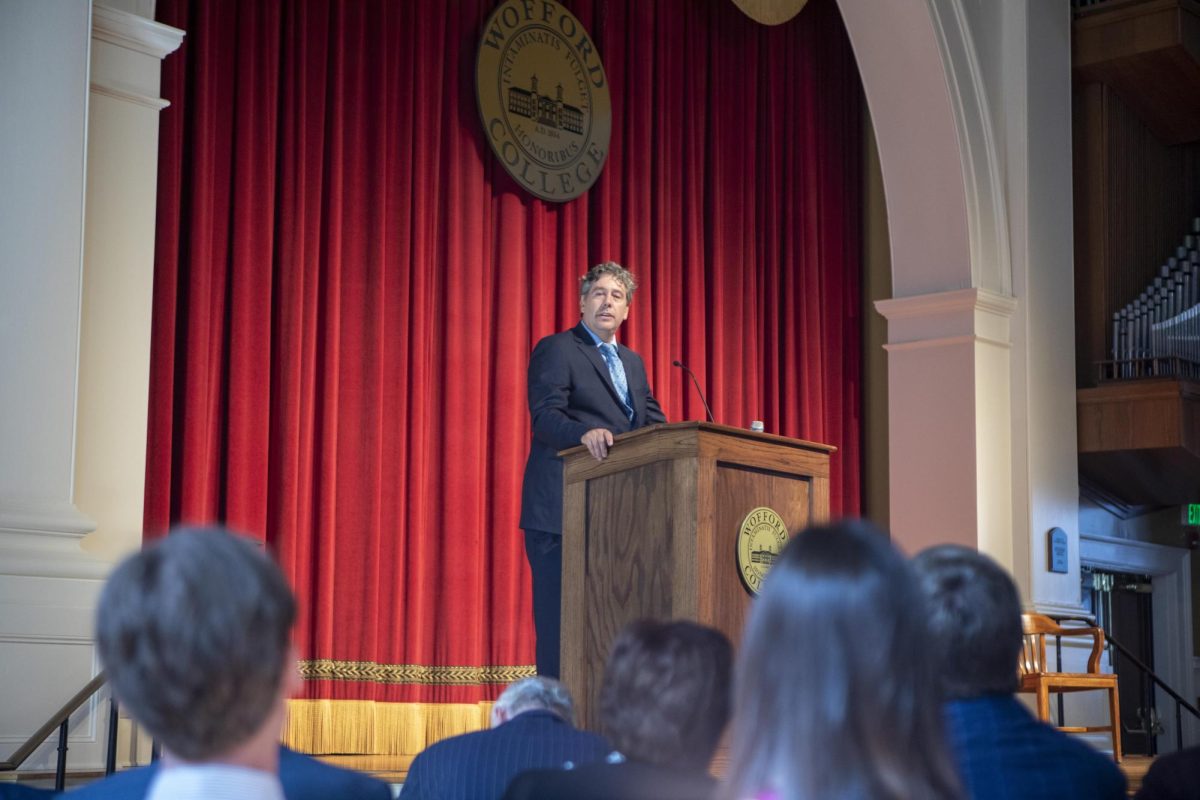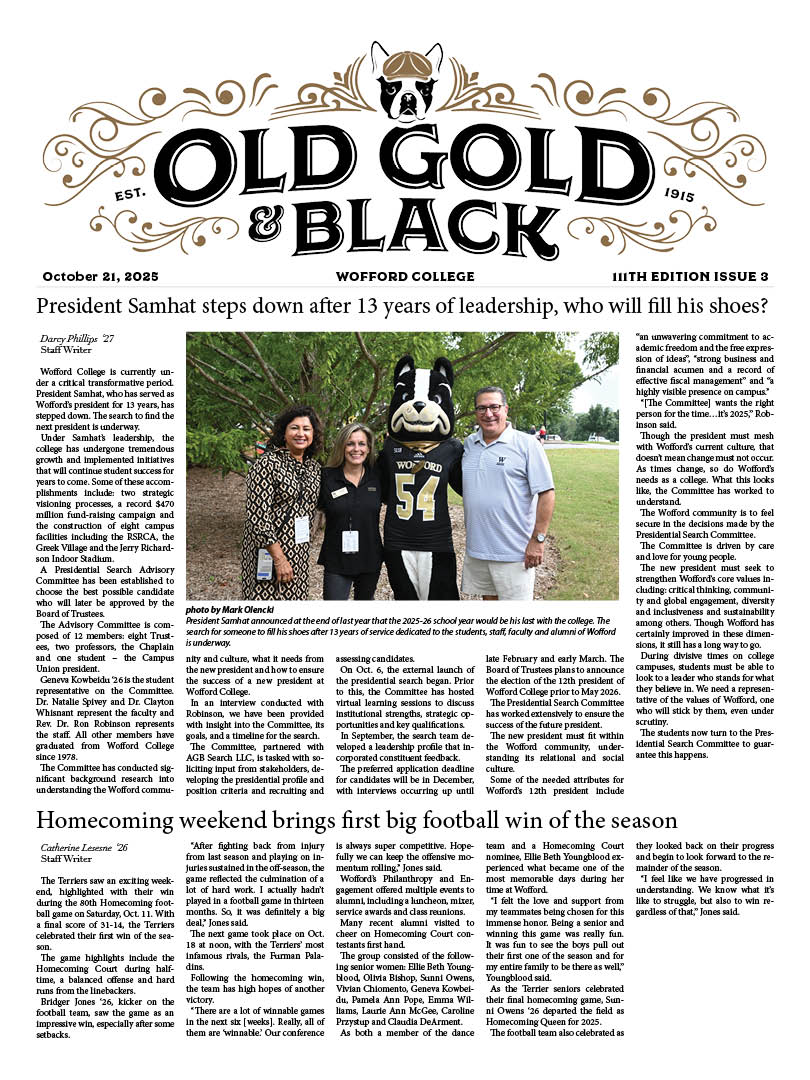The beauty behind community support at Wofford
One helping of capellini pasta. Four cloves of garlic, minced. One teaspoon of red pepper flakes. Parsley, to taste.
These are some of the ingredients in one of my favorite pasta dishes — it isn’t the most decadent, cheesy or marinara’d pasta recipe, but for me, it’s all I need sometimes. The recipe, more specifically called Aglio e Olio, is a simple dish often made as a midnight snack in Italy, when you need some carb therapy quickly and easily.
I like to make this regularly, and I often add in chicken and whatever vegetables I have on hand. It’s an easy, no-fuss lunch or dinner; its simplicity in flavor gives me a sense of peace, sort of like the feeling you get when you eat your favorite childhood food.
For me, cooking has become one of many ways of coping with the stress of college life. The repetitive slicing-stirring-tossing movements have become second nature by now. It’s a calming dish to make that gives the cook a sense of stability.
I have made this dish twice in the last week. The first time was after I learned that there had been a shooting in Atlanta, where most of the victims were Asian; the second time was when I learned that the same sentiments that have been expressed in our country towards Aisan Americans in the past year were present on Wofford’s campus.
Since the news broke about the events on March 16, misinformation has spread rapidly about the motivations behind the shooting. While police have not yet released a statement confirming a racial motivation from the alleged perpetrator, the Asian American and Pacific Islander community has been mourning the deaths of the victims nationwide, including at Wofford.
The Wofford Asian and Pacific Islanders organization held a candlelight vigil on March 25 to honor the lives lost in the shooting. It is important to note that attacks on the Asian community are not limited to the events on March 16; rather, there have been continual instances of violence and racism towards this community since the start of the coronavirus pandemic. This episode was just more widely publicized.
Even on Wofford’s campus, it seems that there may be some students with biases against the WAAPI community. According to Campus Union and WAAPI, there have even been recent instances of anti-Asian rhetoric among some students, including a member of Campus Union — and, sources confirmed, a brother of Kappa Sigma.
With all the progress made by the Wofford Anti-Racism Coalition and the Office of Diversity and Inclusion, these developments seem to hit even harder somehow. Our students and faculty have worked incredibly hard to make Wofford an inclusive campus, yet these racist instances are still occurring.
As a white woman, I will never understand the fear, sadness and anxiety of the AAPI community as they navigate through the sea of racism right now, and my negative feelings toward this situation cannot compare to those that are a part of this community. But every American still has to deal with the emotions they do feel in this situation.
Repetition and communication. These two “-tions” are the tools I use to cope with the weight of the world. In my personal life, this often means cooking a familiar, easy meal and then enjoying it with friends and family.
By creating a space where I am calmer, I can allow myself to sort out my emotions with others. WAAPI has worked incredibly hard to do this on a much larger scale with a community facing much more serious, solemn issues.
Their gathering on the 25 mirrored previous candlelight vigils honoring lives lost in other tragedies. To mourn together in a structured way surrounded with the supporters in the Wofford community is a powerful act of love.
At the vigil, the solemn quiet was a reminder of two things: the tragic loss of life that necessitated the vigil, and the indication that the WAAPI community is not fighting nationwide racism alone.

